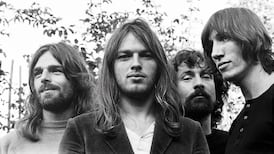In the same year, 1959, that John B Keane’s Sive won the main prize at the All-Ireland amateur drama festival in Athlone, a brilliant one-act play called On the Outside took the honours in the competition for the script of a new drama.
It was submitted by two young men from Tuam, Noel O’Donoghue and Tom Murphy.
The following year, Murphy, a metalwork teacher who had previously worked in the town's sugar factory, submitted an explosive full-length script called The Iron Men. Like Sive, it, too, had been rejected by the Abbey Theatre's director Ernest Blythe.
Murphy later recalled that he received, not the usual rejection slip, but a hostile letter from Blythe, claiming that there were no such people in Ireland as the savagely violent family in the play.
The Iron Men, renamed A Whistle in the Dark, thus went straight from Athlone to London: the festival adjudicator, actor and producer Godfrey Quigley, sent it to the radical director Joan Littlewood, who staged it at Stratford East in January 1961.
It was the sensation of that London season – the influential critic Kenneth Tynan claimed that it was among the most violent plays yet seen on the London stage.
In fact, there is little direct violence on the stage – Tynan’s comment was a tribute to Murphy’s ability to generate a profound sense of psychological threat.
It is not hard to understand Blythe’s rejection of the play.
Ireland was anxious to project a new image of itself as an open, modern, optimistic country, finally embracing industrial society and shrugging off its dark past.
A Whistle in the Dark actually begins with an Irishman attempting to do just that: Michael Carney has emigrated from Mayo to Coventry and is now a factory worker with a tidy house and new English wife.
But the dark past cannot be shrugged off. It pursues him in the shape of a distorted Irish masculinity that can express its confusions and insecurities only in violence.
Michael’s brothers Harry and Iggy, a pimp and an extortionist, have heeled up on him. Now, his monstrous father Dada arrives with the youngest brother, the innocent Des, in tow. Michael’s attempts to prevent Des being sucked into the family’s traditions of gang fighting lead to tragedy.
The attempt to escape from tribalism into modernity collapses – the stage is held at the end by the brutal, cowardly, destructive Dada.
This was not the way the emerging Ireland wanted to see itself, or perhaps more importantly to be seen by others.
When Quigley brought the play to the Olympia in Dublin in 1962, the Evening Herald declared it a "mournful thought that this was the picture of the Irish race that was paraded for three months last year to the wondering gaze of London theatregoers". Yet Murphy was writing in the great tradition of Synge and O'Casey – telling Ireland what it did not wish to hear.
Behind the sensationalism, moreover, there was a subtle and sophisticated artistry.
A Whistle in the Dark retains its power because it generates an electric tension between its form and its content. The content is violent, anarchic disorder. But the form is that of a perfect classical tragedy, unfolding as the great Greek dramas do in one place over 24 hours, and with the same sense of looming inevitability.
The play is, indeed, one of the very few successful tragedies written for the 20th century theatre.
That such a play could be created in Ireland suggested not just the arrival of a potent new theatrical imagination but the existence of a culture still caught between the old and the new.











